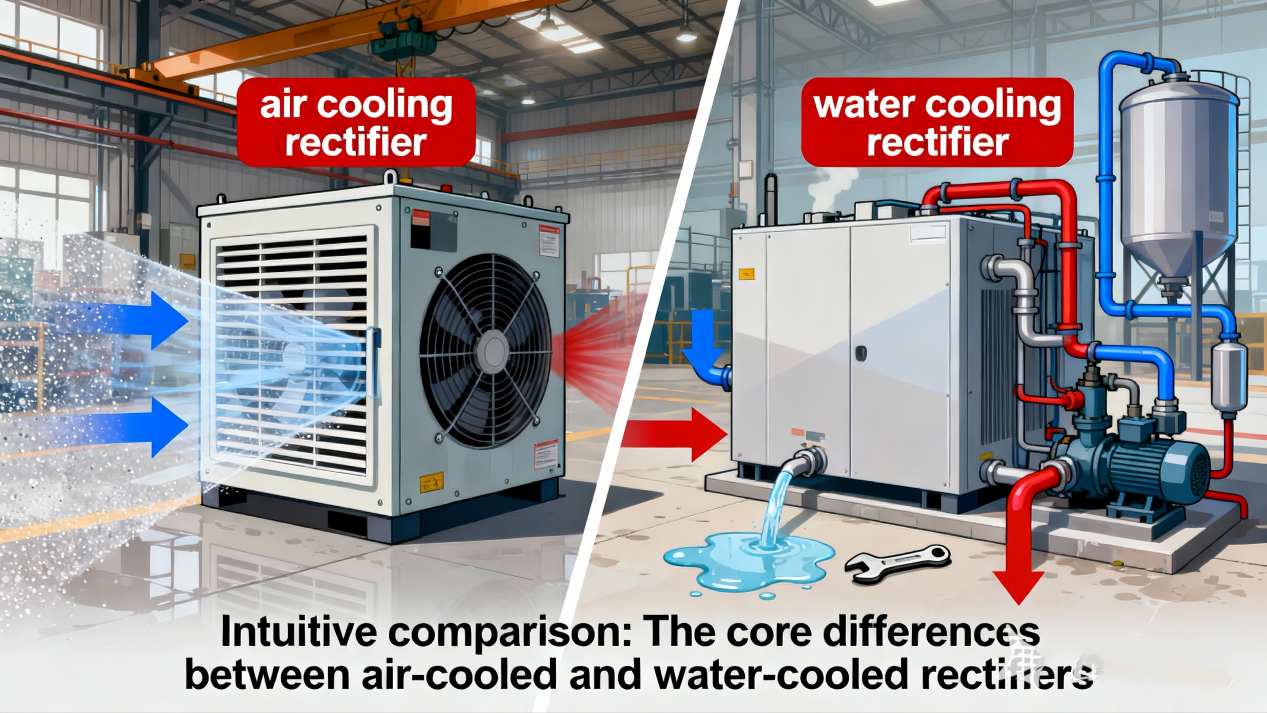If you are hesitating about which cooling method to choose for electroplating rectifiers, or unsure which one is more suitable for your on-site situation, then the following practical analysis may help you clarify your thoughts.
Nowadays, with the increasing requirements of electroplating technology, electroplating rectifiers have also entered the era of high-frequency switching power supplies, developing from DC electroplating to pulse electroplating. During the operation of rectifiers, there are three common cooling methods: air cooling (also known as forced air cooling), water cooling, and oil cooling, which were widely used in the early days.
Currently, air cooling and water cooling are the two most widely used methods. They have a relatively simple structure, are more environmentally friendly, and can better help companies control production costs, with overall advantages significantly greater than early oil cooling.
Let's talk about air cooling first
Air cooling is currently the most commonly used method of heat dissipation in various electronic devices. Its biggest advantage is that the device is easy to move, easy to maintain, and the heat dissipation effect is also relatively ideal. An air-cooled rectifier relies on a fan to blow or extract air, accelerating the airflow inside the equipment and removing heat. Its heat dissipation essence is convective heat dissipation, and the cooling medium is the ubiquitous air around us.
Let's take a look at water cooling again
Water cooling relies on circulating water to remove the heat generated during the operation of the rectifier. It usually requires a complete set of water circulation cooling system, so moving the equipment can be quite troublesome and may involve other ancillary equipment, which naturally increases the workload.
In addition, water cooling requires water quality, at least using regular tap water. If there are many impurities in the water, it is easy to form scale after heating, which adheres to the inner wall of the cooling pipe. Over time, it may cause blockage, poor heat dissipation, and even equipment failure. This is also a significant shortcoming of water-cooled compared to air-cooled. Moreover, water is a consumable that indirectly increases production costs, unlike air which is "free".
How to balance air cooling and water cooling?
Although air cooling is simple, it is important to maintain good ventilation of the equipment and regularly clean up accumulated dust; Although water cooling involves concerns about water quality and pipeline blockage, it has a benefit - the rectifier can be made more enclosed, and its corrosion resistance is usually better, after all, air-cooled equipment must have ventilation openings.
In addition to air cooling and water cooling, there was also an early type of oil cooling
In the era of thyristor rectifiers in the past, oil cooling was more commonly used. It is like a large transformer, using mineral oil as the cooling medium to avoid electric sparks, but the corrosion problem is also quite prominent. Overall, air cooling and water cooling are superior to oil cooling in terms of performance and environmental protection.
To summarize briefly, from a practical perspective, air cooling is usually a more common and hassle free choice. Water cooling is generally used in rectifier equipment with higher power and heat dissipation requirements. For parallel operation rectification systems, air cooling is still the mainstream; Most small and medium-sized rectifiers also use air cooling.
Of course, there are exceptions. If your workshop environment is prone to sandstorms and heavy dust, water cooling may be more suitable. The specific selection still depends on the actual situation on site. If you have specific needs, please feel free to contact us at any time. We can provide you with more detailed analysis based on your process conditions and on-site environment!

VS

Post time: Nov-21-2025





